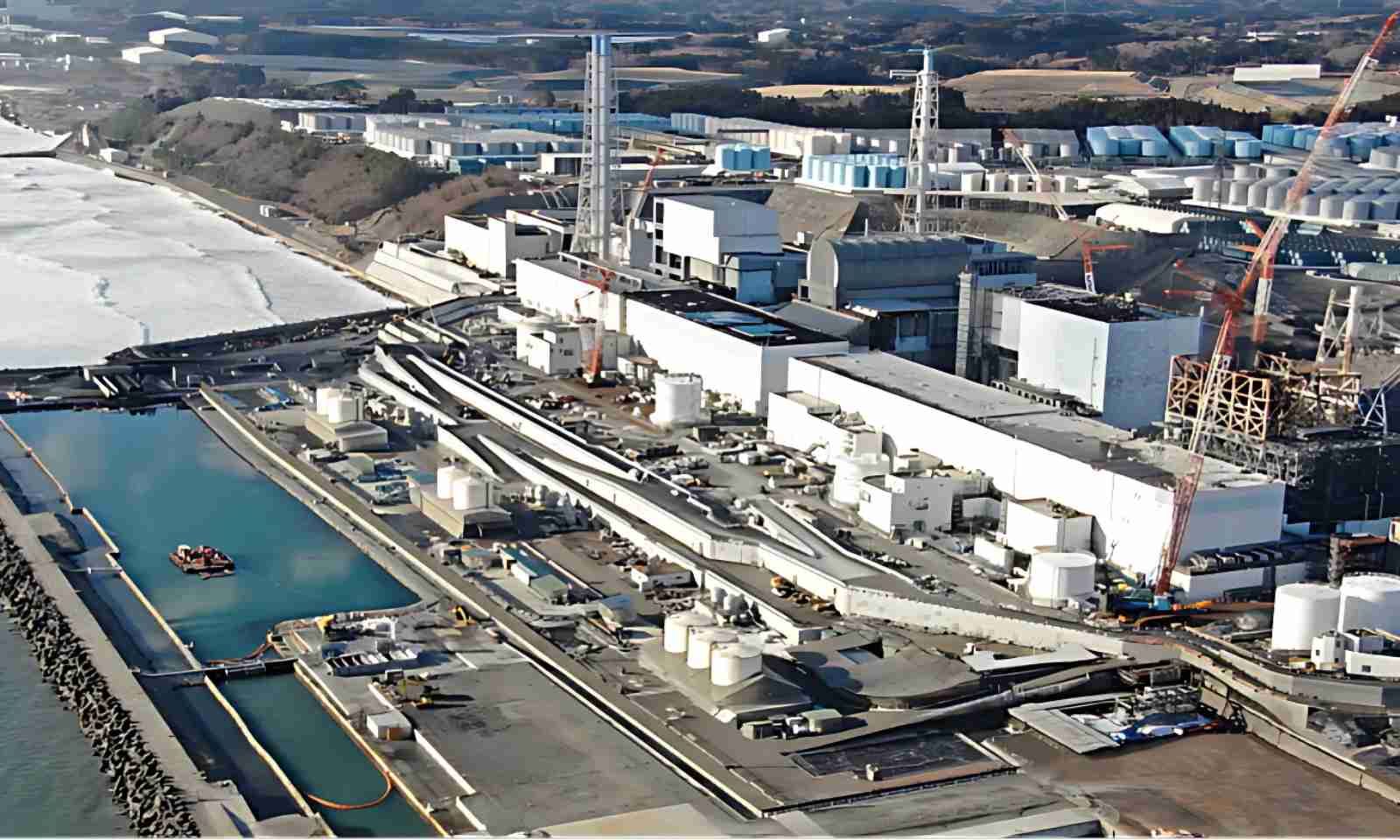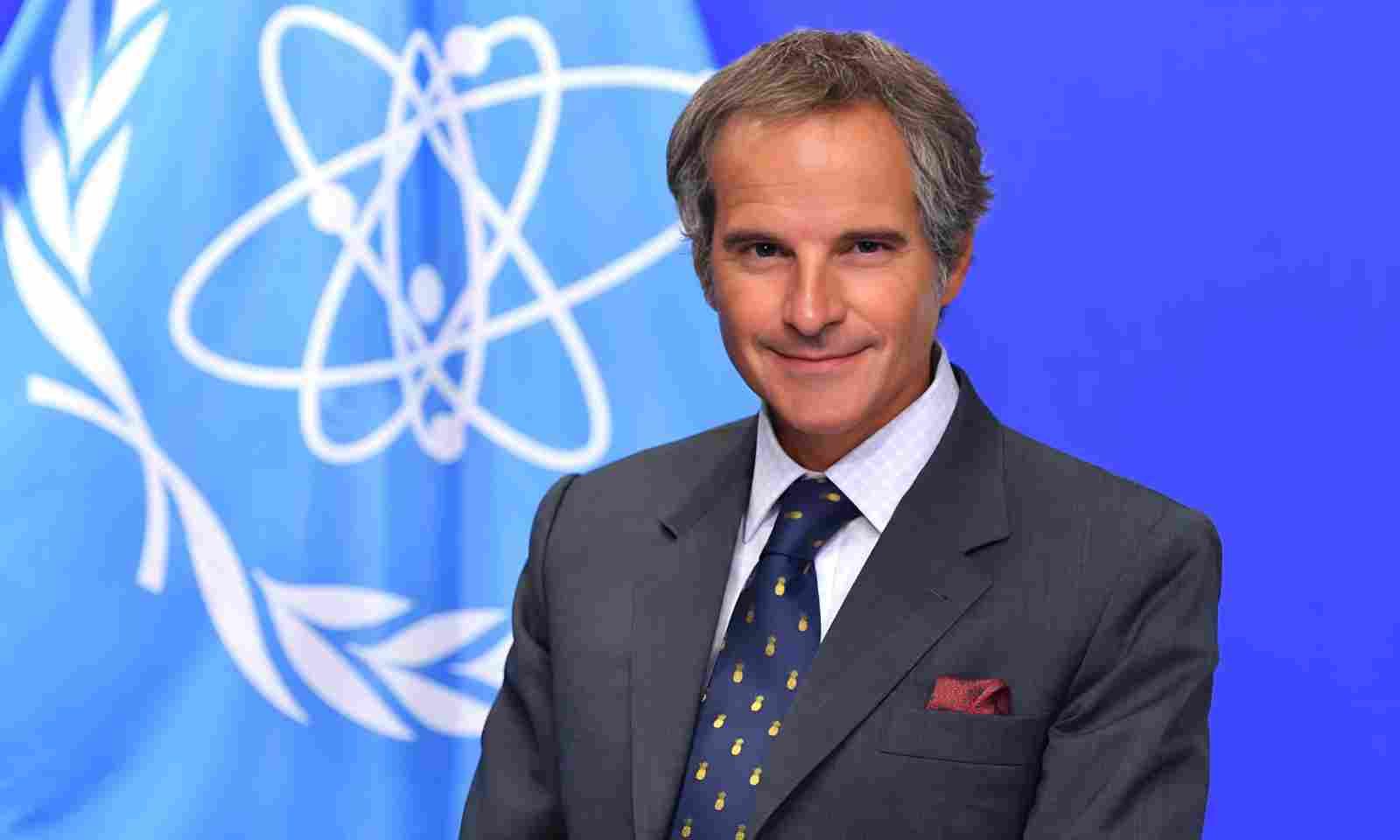

Members of the media at Tepco’s tsunami-crippled Fukushima Daiichi nuclear power plant in Fukushima Prefecture in February 2016.
Photo/Toru Hanai
Transparency 'very important' in ruined Fukushima discharge - UN nuclear chief
Rafael Grossi says the decommissioning process will require many innovations and careful planning.


Hekari urge sharper attack after narrow loss to Solomon Kings


PM signals major Indo-Pacific pivot to counter ‘rupturing’ global order

China maintains Pacific climate support as US labels SPREP ‘wasteful’

Hekari urge sharper attack after narrow loss to Solomon Kings


PM signals major Indo-Pacific pivot to counter ‘rupturing’ global order
A difficult operation to remove a small amount of radioactive debris from Japan's stricken Fukushima Daiichi nuclear power plant has been underway since August 2023.
This is a step towards decommissioning the plant hit by a tsunami 13 years ago.

The Fukushima Daiichi nuclear power plant in Japan. Photo/Philip Fong
A task force, set up by the International Atomic Energy Agency (IAEA), is monitoring the discharge of treated nuclear water into the Pacific Ocean.
Outlining some of the details, the agency’s Director-General, Rafael Grossi, says the operation will require many innovations and careful planning.
He said nearly 15 months ago, the IAEA was in the process of finalising several “preparatory reports” and talking to governments in the Indo-Pacific region, including New Zealand.
A trial process began last month, trying to remove fuel debris, Grossi said.

Rafael Grossi says the IAEA will monitor "every drop" of treated radioactive water from the Fukushima nuclear power plant into the Pacific Ocean. Photo/IAEA
What happened?
Japan has been discharging waste from about 1000 storage tanks holding 1.34 million metric tonnes of radioactive water collected after an earthquake and tsunami in 2011 that caused the meltdown of the Fukushima nuclear plant.
Following the major quake, a 15-metre tsunami struck disabling the power supply and cooling of three reactors at the Fukushima nuclear plant.
The three cores largely melted in the first three days. More than 100,000 people were evacuated from the area as a precaution because of radioactive releases in the wake of the accident.
After two weeks, the three reactors were stable, and the ‘cold shutdown condition’ was announced in mid-December by Japanese officials.
According to the World Nuclear Association, there have been no deaths or cases of radiation sickness from the nuclear accident.
But there have been 2313 disaster-related deaths among evacuees from the Fukushima prefecture, which left 19,500 killed by the earthquake and tsunami.
Since the accident, work has taken place to safely decommission the reactors and the surrounding areas, with large areas of the evacuated areas now reopened for people to live in.
The air dose rate is now similar, or lower than the major cities, the association told the International Atomic Energy Agency's General Conference in Vienna last week.

Fijians protest against the discharge of nuclear wastewater into the Pacific Ocean. Photo/Twitter/@redstreamnet
To find out more: Tepco has produced an interactive video guide to the situation at Fukushima Daiichi and the decommissioning process.
Grossi says the intention is to lift all the evacuation areas even if it takes many years to do so.
“If I can use the analogy, a lot of ‘water under the bridge’ since. Now, nine batches of treated water have been successfully discharged into the sea in full compliance with the safety standards, and apart from how much water they have discharged, is that the levels of radionuclides that could be important are even lower than what we had estimated in the beginning.
“This is very important, which would happen without any harmful effects on the environment, on the water, on sediments, or the fish.
“It has taken us a lot of effort in terms of agreeing with the government of Japan on the establishment of an independent office of the IEA at the Fukushima Daiichi nuclear power station.
“It allows us to be present on site, which is very important for transparency, to provide continuous data on our website.
“This is unprecedented importance because it's an exercise of scientific and technological integrity but at the same time introducing an element which was so important and that is the transparency, the ability for us - showing the international community how things are happening in real-time, as it is happening.”
Japan came under intense pressure last year after most countries in the region rejected the release with China one of the first to ban seafood imports from Tokyo.

Photo/supplied
But the Chinese government announced in August this year that it had reached a consensus on the discharge of radioactive water from the Fukushima nuclear plant, bringing to an end a diplomatic dispute that had rumbled on for over two years.
Consensus was also reached by Pacific leaders and Japan to address the controversial release of treated nuclear wastewater from the Fukushima nuclear power plant into the Pacific Ocean.
The agreement came at the 10th Pacific Island Leaders Meeting (PALM10) in Tokyo. Japan's Prime Minister Fumio Kishida assured the PIF leaders that the discharge was being conducted in compliance with international safety standards and practices.
Kishida emphasised Japan's commitment to ongoing collaboration with the IAEA to ensure safety and transparency.
Cook Islands Prime Minister and then forum chair, Mark Brown, led the negotiations with the Japanese government and the TEPCO-owned nuclear power station.
The Pacific leaders called for a shared commitment to safeguarding the health, environment, and marine resources of the region. There was also a need for transparency from Japan, Brown said.
Japan in turn agreed it would support the development of regional scientific capacity through the IAEA, as requested by the PIF leaders.
Grossi said there were two important matters - the water and the amounts - going to take decades and you heard right - decades, not months or years, decades.

Photo/Pacific Conference of Churches
“I think we should welcome this because this is the way in which we can control the discharges in a way which guarantees that the balance of the water, the components of the water into the environment do not affect in the slightest the natural equilibrium that exists.
“To do that, you dilute to a level and you calculate when you mix it with the sea water what is going to be the impact and what we aim at is that there is going to be no impact at all.
“We had more than 1.3 million tons of water there, which needed to be treated very, very meticulously. And then we have to measure it, and then we have to check that everything is okay.
“To the Cook Islands, Fiji, Beijing, and Seoul and to all these places which I personally visited to give all the necessary explanations. I was saying all the time, we need to do this in the right way. And this, of course, necessitates the ability of the agency to check that this is happening in the right way.
“We could say that we have been doing this for a year already and that we have been able to check that the system works. We have proven for more than a year that it's working well.
“We are going to be checking this until the last drop. When it comes to the Pacific Islands, the dialogue has been special for me, very, very special. I've been in constant, and my technical experts have been in constant contact with the Pacific Islands Forum with the Secretariat and with the countries, specifically Fiji and then the Cook Islands and others.
“The forum requested me to look into some questions that a group of experts that they had hired to give them another independent look at this would have. And so we engaged with this group, we provided all the necessary answers. My impression is that now we have a degree of mutual trust, we have a degree of confidence that was not there in the beginning.
“We are not going anywhere. If anything, we are increasing the presence at Fukushima. We are taking additional measures so that the degree of transparency contrary to what one may think is going to be increasing. That this trust never goes down and we can continue to give the assurances that people want to have.”
Watch Rafael Grossi's full interview below.